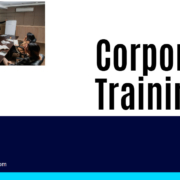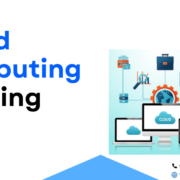5 Best Practices for Effective Cloud Computing Training
Cloud computing has become the backbone of modern IT infrastructure, enabling businesses to scale quickly, improve collaboration, and reduce costs. With organizations increasingly migrating to cloud platforms, the demand for professionals skilled in cloud technologies is on the rise.
To meet this need, structured and effective Cloud Computing Training programs are essential. Whether you are pursuing a Cloud Computing Course during your academic journey or opting for Summer Training, adopting the right practices ensures that your learning is impactful and career-focused. Below are five best practices to follow for effective cloud computing training.
Build a Strong Foundation:
Before diving into complex cloud services, it’s crucial to understand the fundamentals of cloud computing. Learners should familiarize themselves with core concepts such as virtualization, service models (IaaS, PaaS, SaaS), deployment models (public, private, hybrid), and security basics. A well-structured training module, such as those offered by institutes like CETPA Infotech, typically emphasizes foundational knowledge before advancing to specialized tools and platforms.
Emphasize Hands-on Learning:
Theoretical knowledge alone is not sufficient in the cloud domain. An effective Cloud Computing Course must include hands-on labs, real-time projects, and exposure to popular platforms like AWS, Microsoft Azure, and Google Cloud. Practical training helps learners understand real-world scenarios, strengthens problem-solving abilities, and builds confidence in managing cloud environments.
Read more: How to Advance Your Career with Cloud Computing Training
Stay Updated with Industry Trends:
Cloud technologies evolve rapidly, with frequent updates and new services being introduced. To remain relevant, learners should consistently update their skills. A good practice is to follow industry blogs, attend webinars, and explore advanced modules during Summer Training programs. This approach ensures that students and professionals stay ahead of the curve and are equipped to handle dynamic workplace challenges.
Integrate Security and Compliance Training:
Security remains one of the biggest concerns in cloud adoption. Therefore, an effective training program should integrate cloud security practices, compliance requirements, and governance frameworks. Understanding encryption, identity management, and data protection not only enhances technical proficiency but also prepares learners to address critical security challenges faced by organizations.
Seek Guidance from Experts and Collaborate:
Learning is most effective when supported by expert mentorship. Training from experienced professionals allows learners to gain insights into industry best practices and real-world applications. Institutes such as CETPA Infotech serve as valuable resources where students can interact with trainers, collaborate with peers, and receive career guidance while pursuing cloud-related courses.
Conclusion
Effective Cloud Computing Training is not just about mastering tools—it’s about adopting a comprehensive approach that blends foundational knowledge, hands-on practice, industry updates, security awareness, and expert mentorship. Whether through a structured Cloud Computing Course or a focused Summer Training program, following these best practices can help aspiring professionals build strong careers in the ever-expanding field of cloud technology.










Leave a Reply
Want to join the discussion?Feel free to contribute!